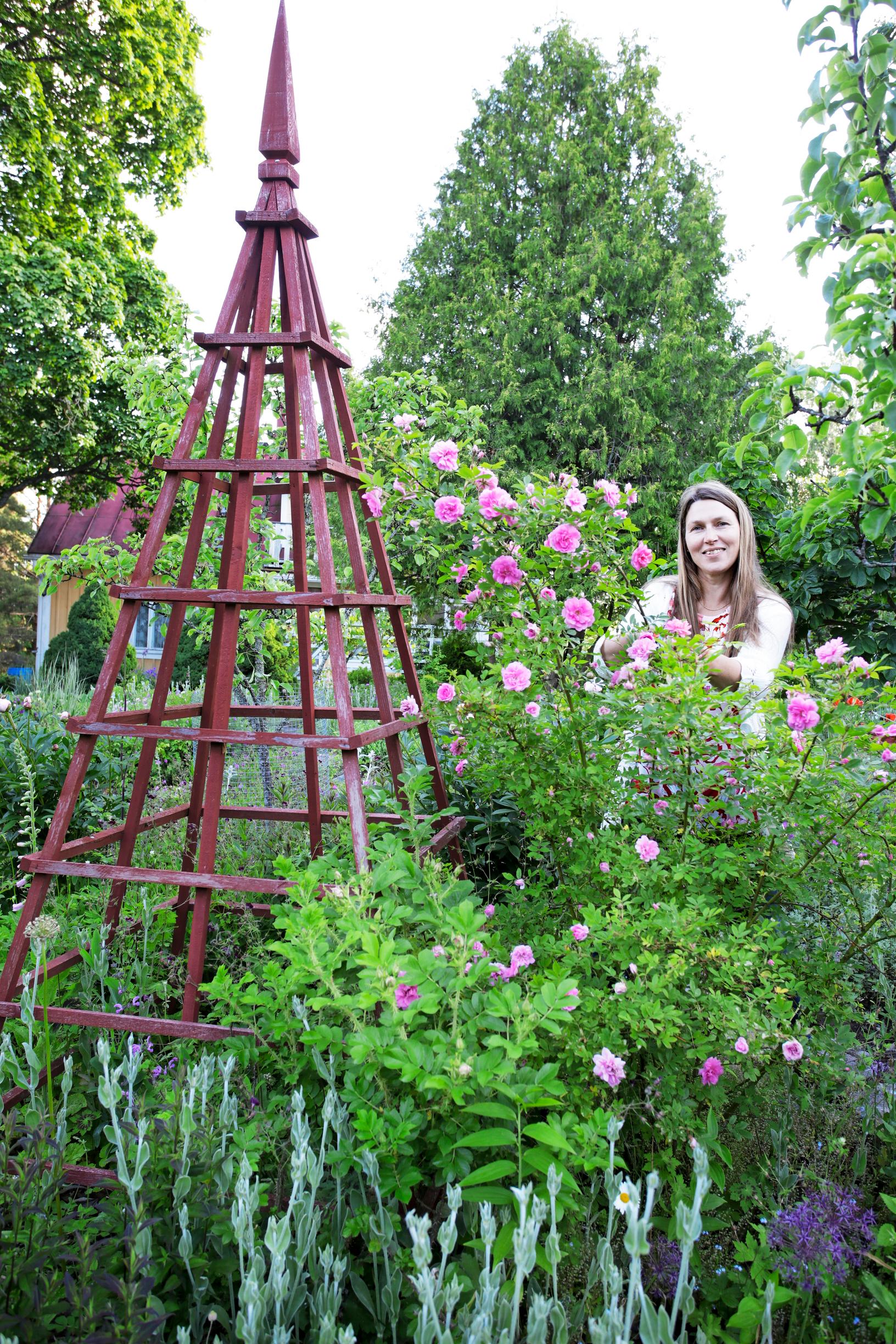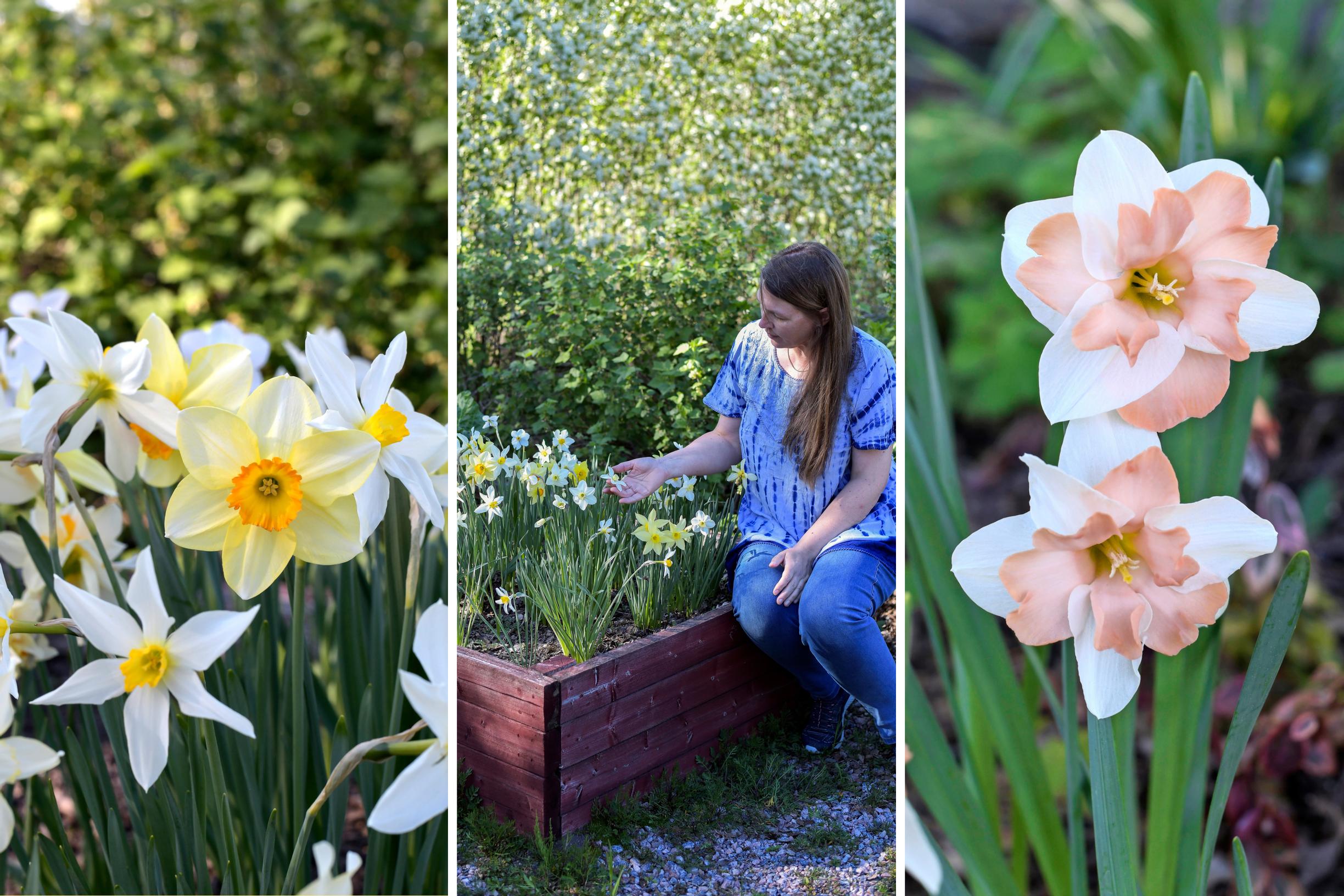
Chatarina’s daffodils kept dying—until she learned to build beds where they thrive year after year
Each spring, Chatarina Munck’s garden blooms with dozens of daffodils. She is especially fond of the older varieties. “My troubles fade away when I breathe in the daffodils’ fragrance,” she says.
Elegant ‘Avalon’ shines like a yellow-and-white star beneath multi-trunked birches, while the white trumpet daffodil ‘Broughshane’ blooms in an airy cluster in a wide planting. Here and there, a handful of pale lemon-yellow daffodils glow beside varieties whose flowers boast soft orange or apricot tones.
“I want my garden to have plenty of spring flowers to brighten the days after winter. Daffodils have thrived here, so I favor them. Initially, I only wanted white varieties, but now I also enjoy yellow ones—especially pale yellows,” says gardener and garden owner Chatarina Munck from Kirkkonummi, Southern Finland.
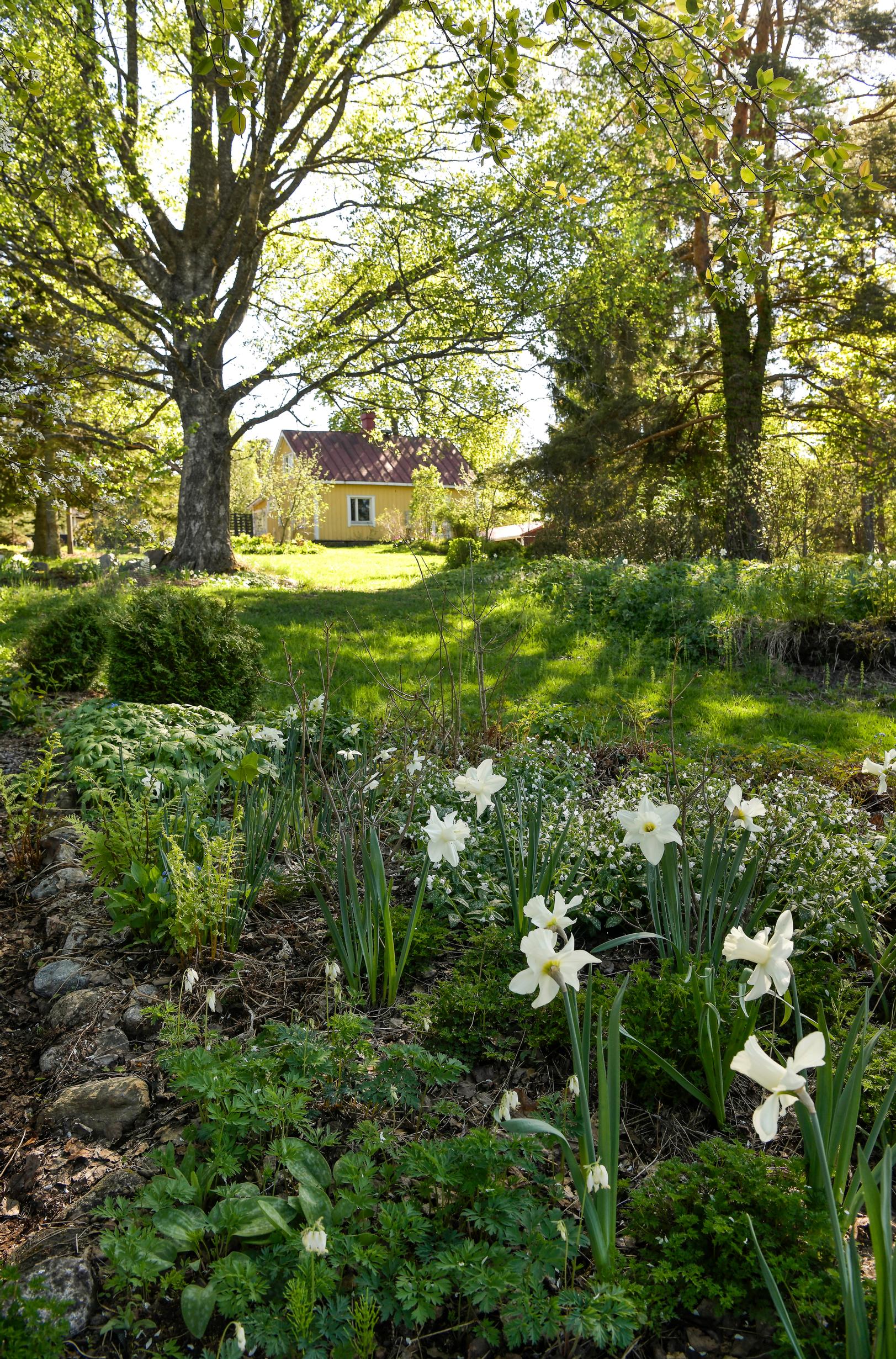
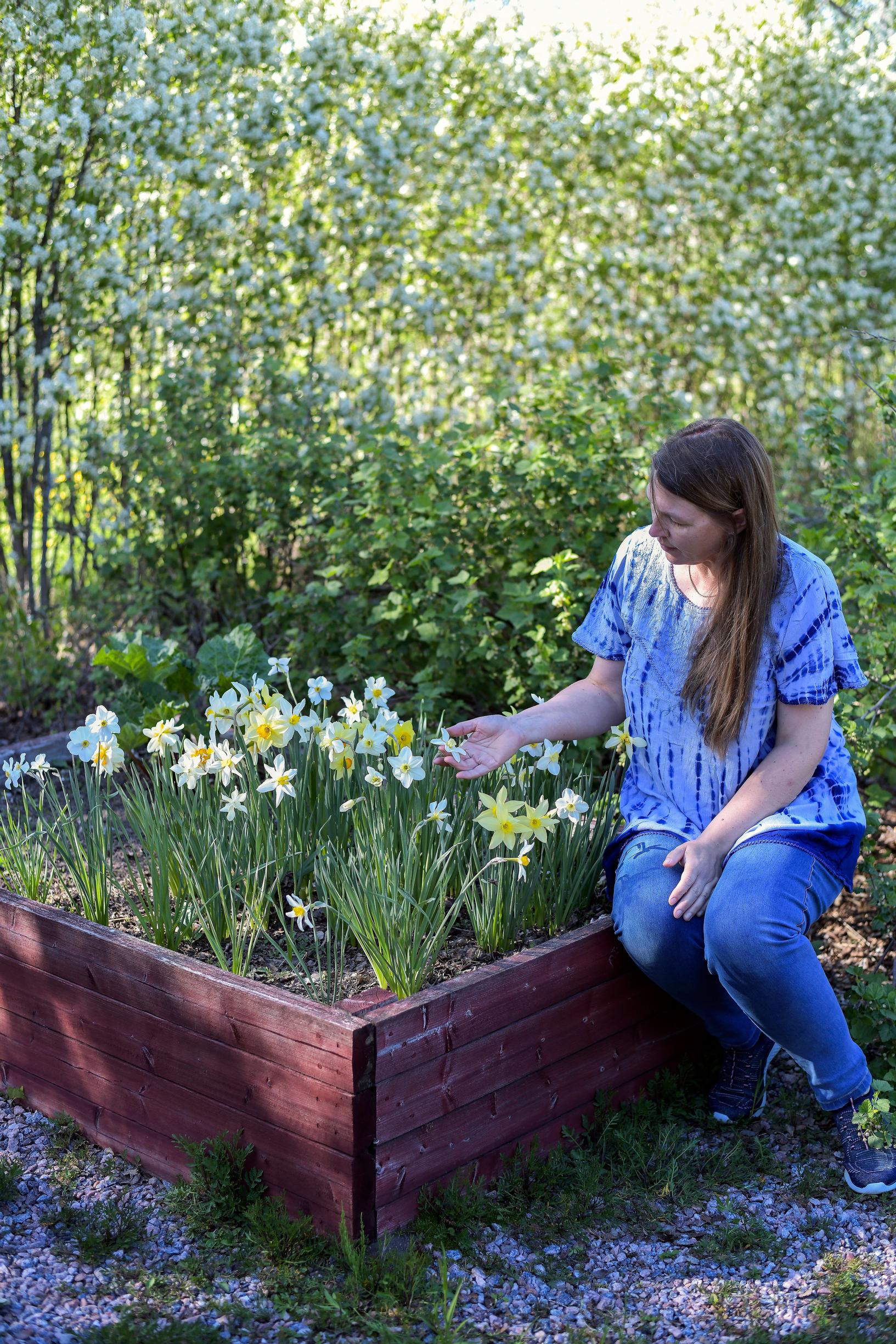
Single-flowered varieties have thrived here without regular division. Double-flowered daffodils, on the other hand, must be divided every three or four years to keep blooming.
“I choose varieties that don’t need much care. Even though aesthetics are important to me, practicality often wins out these days. I just don’t have time for everything.”
Chatarina says caring for daffodils is straightforward: when their blooming starts to decline, she divides the clumps and replants the bulbs. The best time is summer, once the leaves have withered.
“Daffodils begin forming new roots in summer, so it’s best to get the divided bulbs back in the ground quickly.”
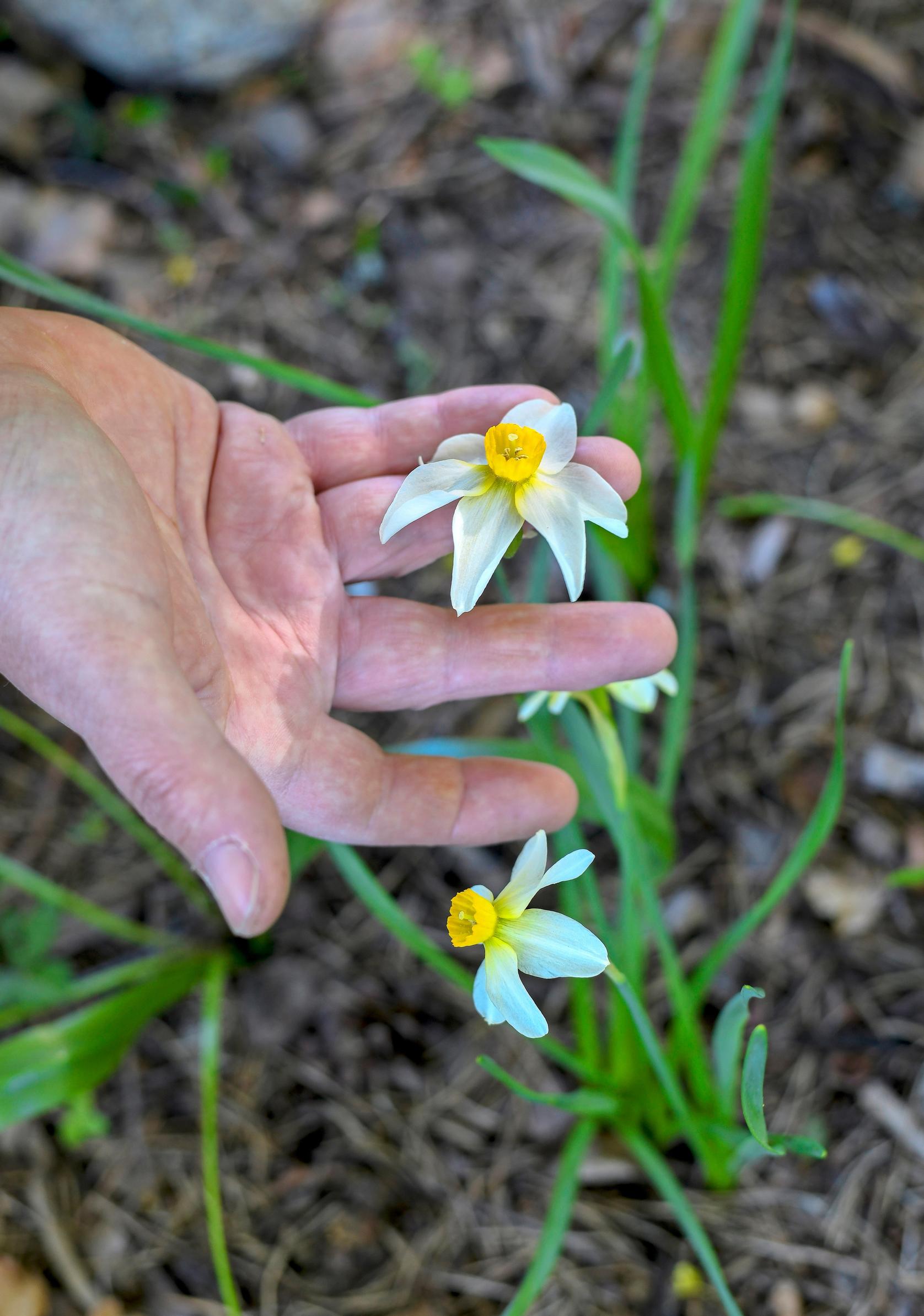
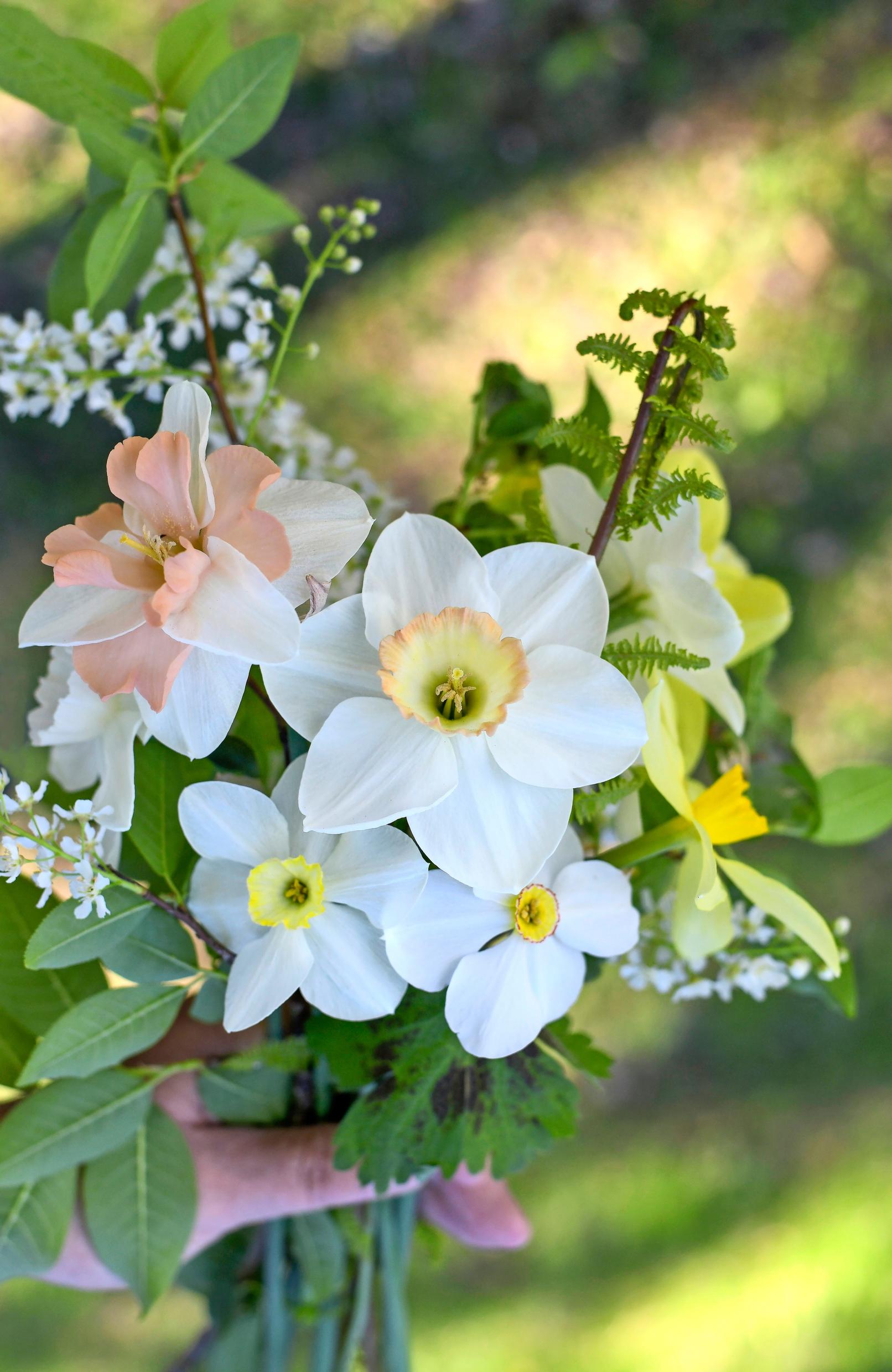
Originally, Chatarina ended up planting daffodils to avoid damage from the area’s many deer, roe deer, hares, and voles. Most plants here need netting for protection after planting, but daffodils do just fine without it.
“When I started creating my garden over 20 years ago, I planted lots of different bulb flowers. Most ended up feeding the wildlife—and that still happens. Daffodils are almost the only bulbs that can bloom in relative peace.”
In Chatarina’s opinion, easygoing and graceful daffodils suit the large, older, and mostly natural yard perfectly. They also flower for a long time, unless a heat wave arrives during their blooming period.
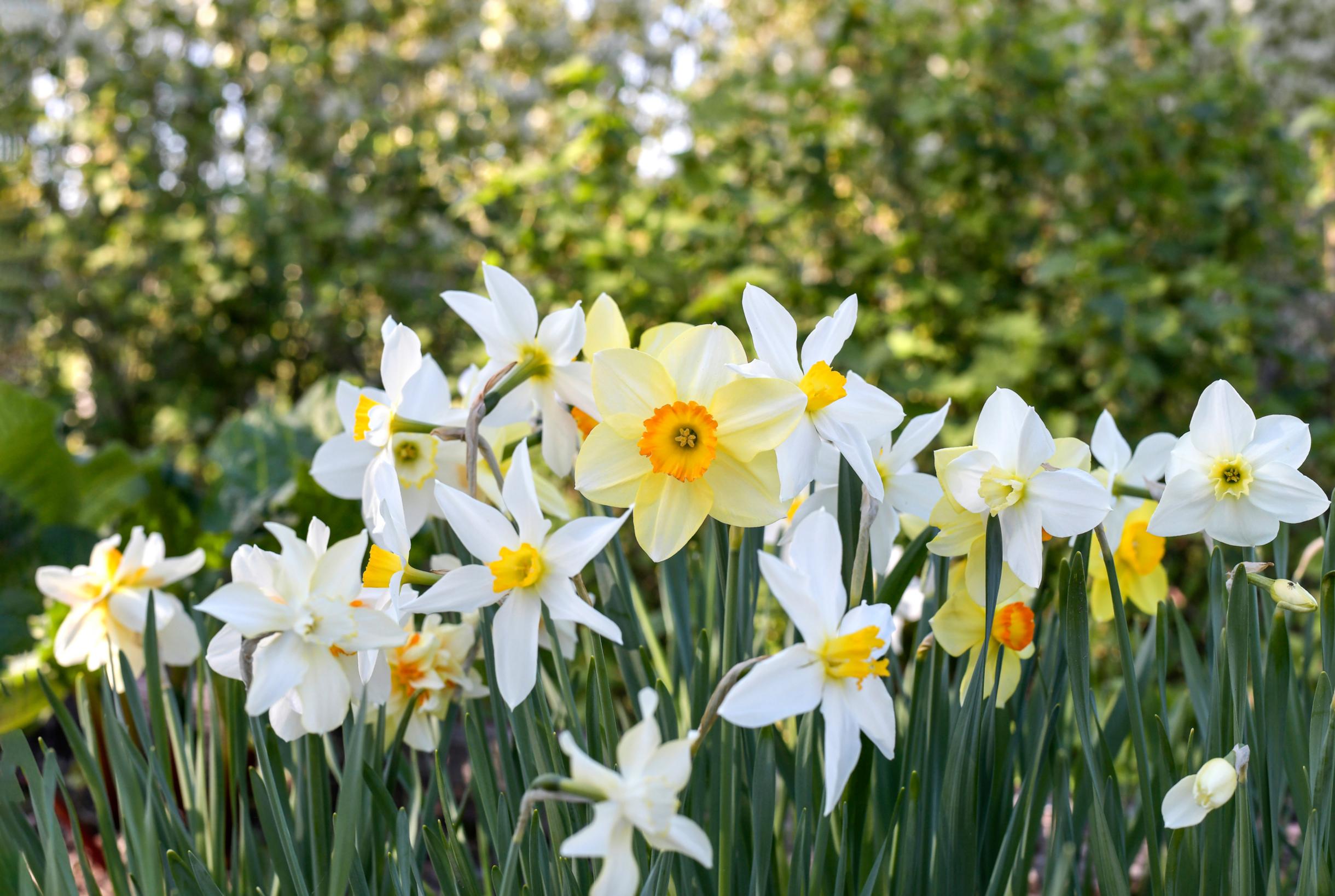
A large share of the garden’s daffodils grow in an old clay field. In the first bed she planted, they vanished in just a few years. Standing water and winter damp were their undoing, so now she installs all plants in raised beds. She layers cardboard, perennial stalks, other plant scraps, and composted horse manure directly on the lawn, topped with about 30 centimeters of soil.
In a second, more time-consuming method, Chatarina uses only leaves, piling them on the lawn in a generous layer. It takes a few years for the leaves to decompose into soil, and then she can start planting.
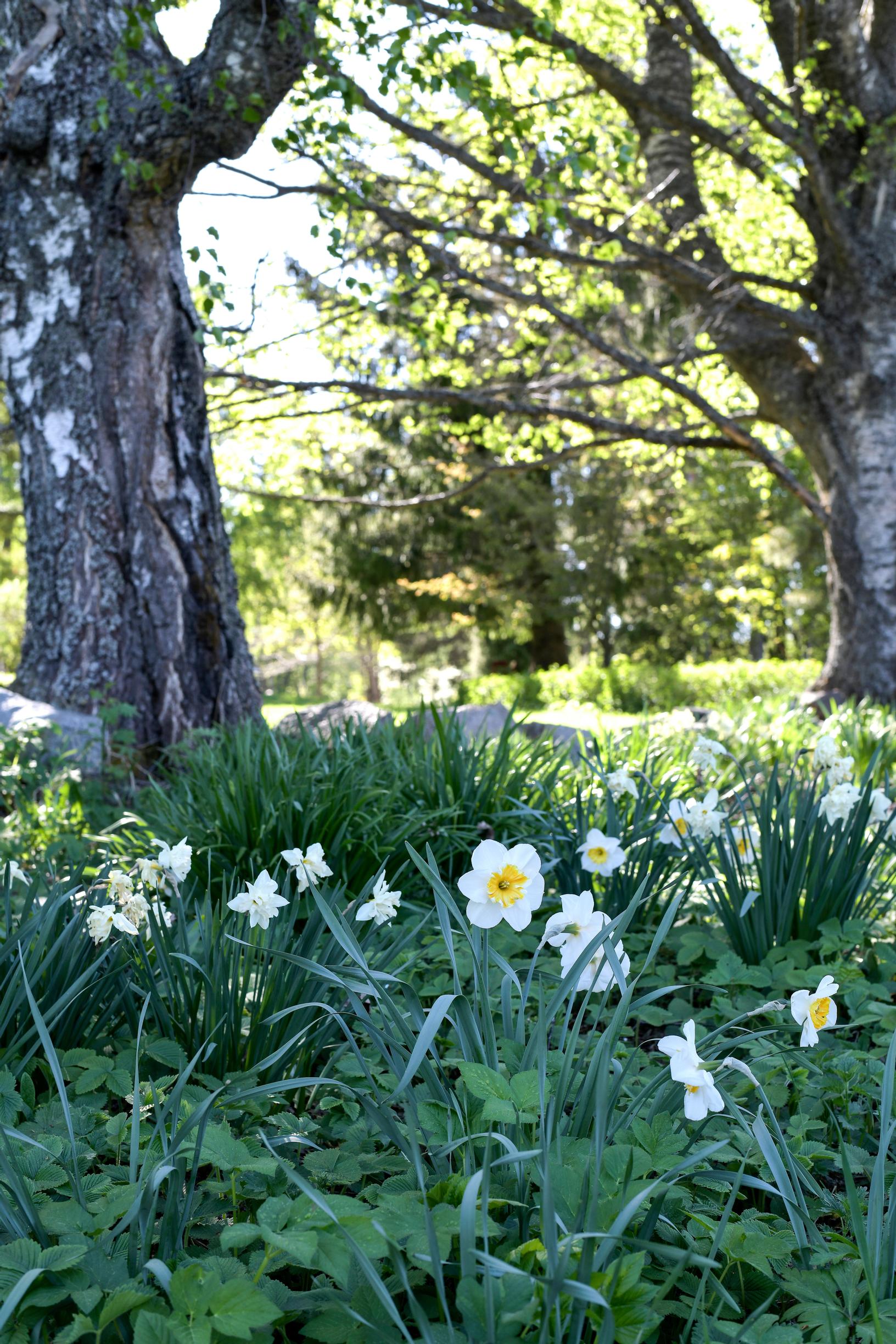
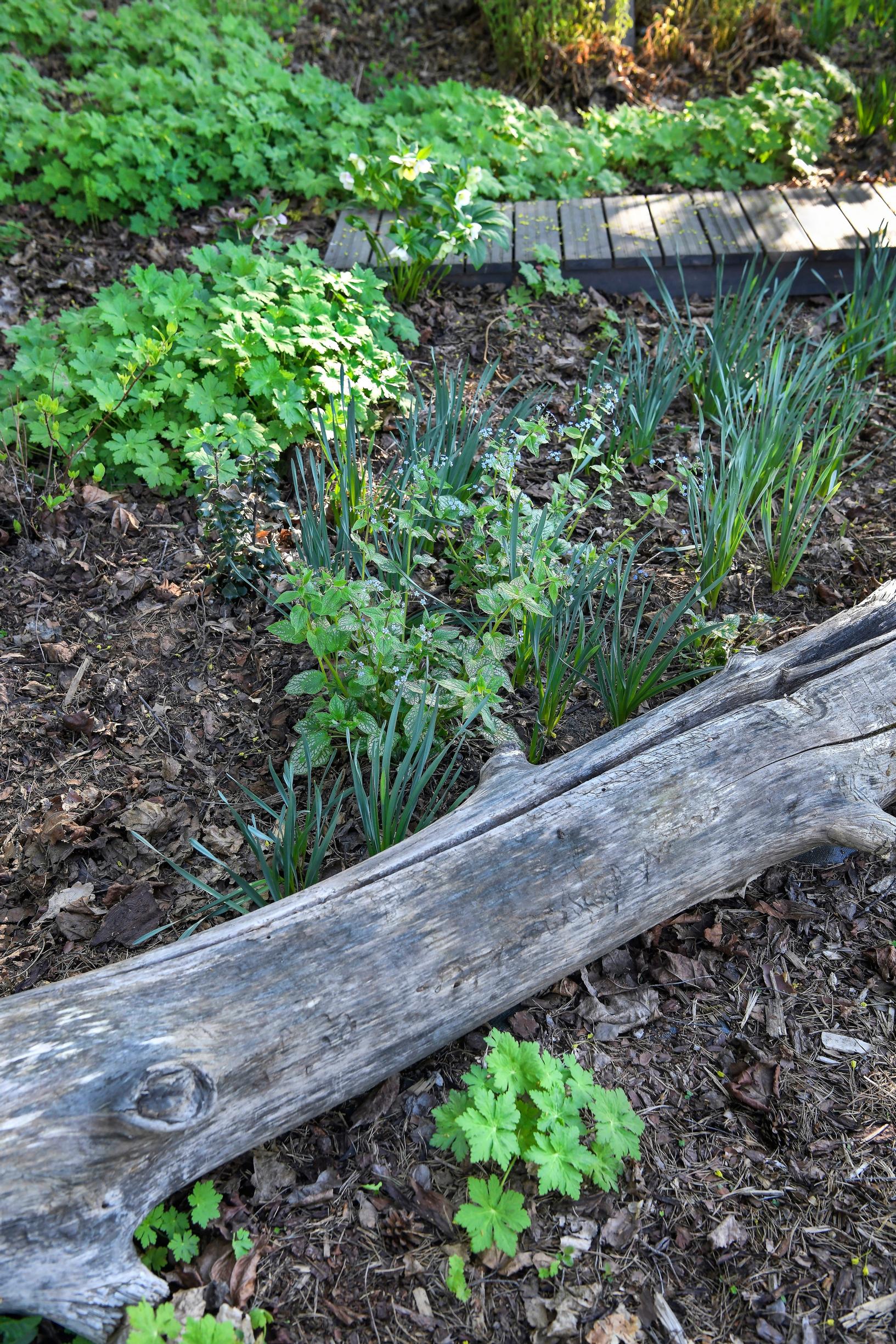
Particularly dear to Chatarina are daffodil varieties registered in the late 19th or early 20th century. She ordered her largest batch of these older types from England before the country left the EU, including 30 varieties such as ‘Mrs Langtry,’ ‘Stella,’ and ‘Ornatus.’
“My plan was to create a small daffodil collection and expand it by dividing the bulbs. They were already fairly expensive back then, so I bought just one bulb of each to get as many varieties as possible.”
Chatarina didn’t want to plant her treasured old bulbs in the wilder parts of the garden, because she wanted to be sure she could propagate them from the offsets.
“This year, I’ll lift and divide the bulbs, then plant the healthiest in the garden. The rest will go back into the box to grow on.”
“It’s fascinating to think that these daffodils were already growing in an English garden more than a hundred years ago.”
What intrigues Chatarina about old varieties are their delicate blooms, sweet fragrance, narrow leaves, and interesting names. The yellow-and-white ‘Victoria,’ for example, was named for Britain’s reigning queen in 1897, the year it was introduced. This fragrant variety was popular for decades at London’s flower markets. The pale-yellow ‘Frank Miles,’ introduced in 1877, was named for a painter and architect who was a close friend of Oscar Wilde.
“It’s fascinating to think these daffodils were already growing in an English garden more than a hundred years ago.”
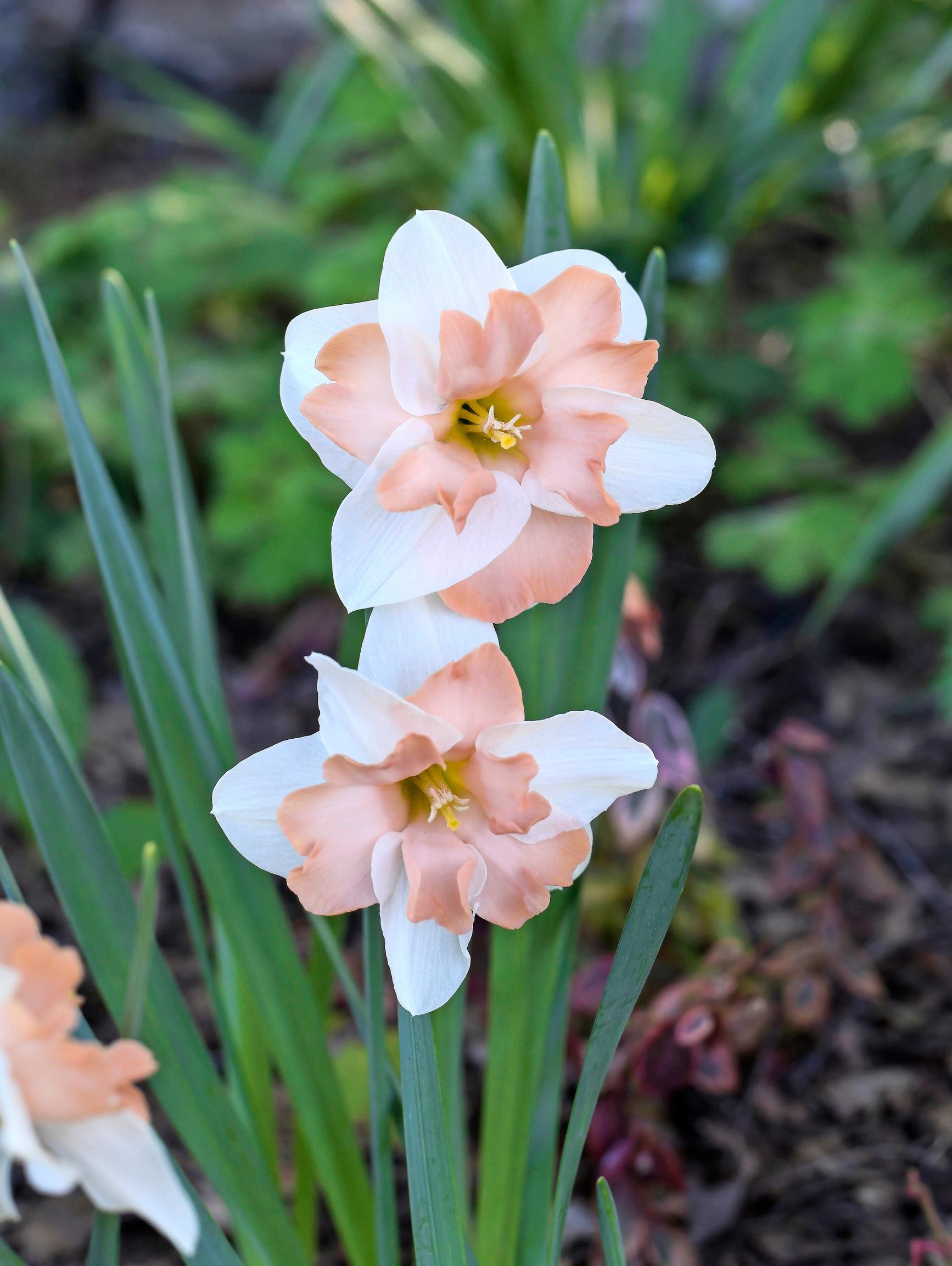
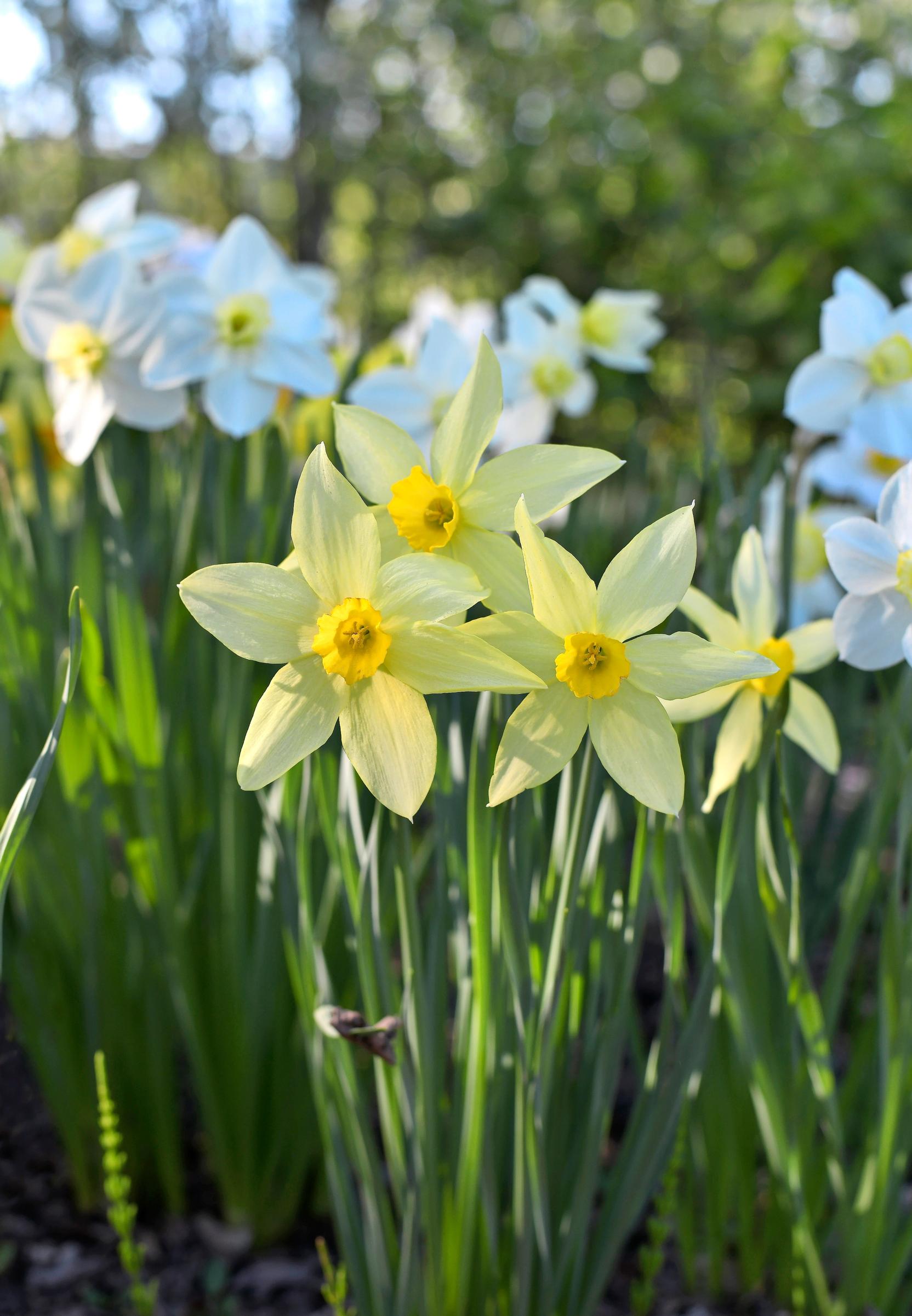
Although Chatarina tends and creates gardens for other people, her passion for her own garden remains strong. She tries to set aside two days a week, from spring to autumn, for her own yard, where time seems to fly from morning till night.
“Here, I can do anything that makes me happy—truly anything at all.”
A couple of years ago, when life felt too stressful, Chatarina turned to flower therapy: deliberately taking time to look at and appreciate her garden’s flowers. It has been a source of comfort right from the start of spring.
“The world’s troubles fade away when I inhale the daffodils’ fragrance and study their tiny details.”
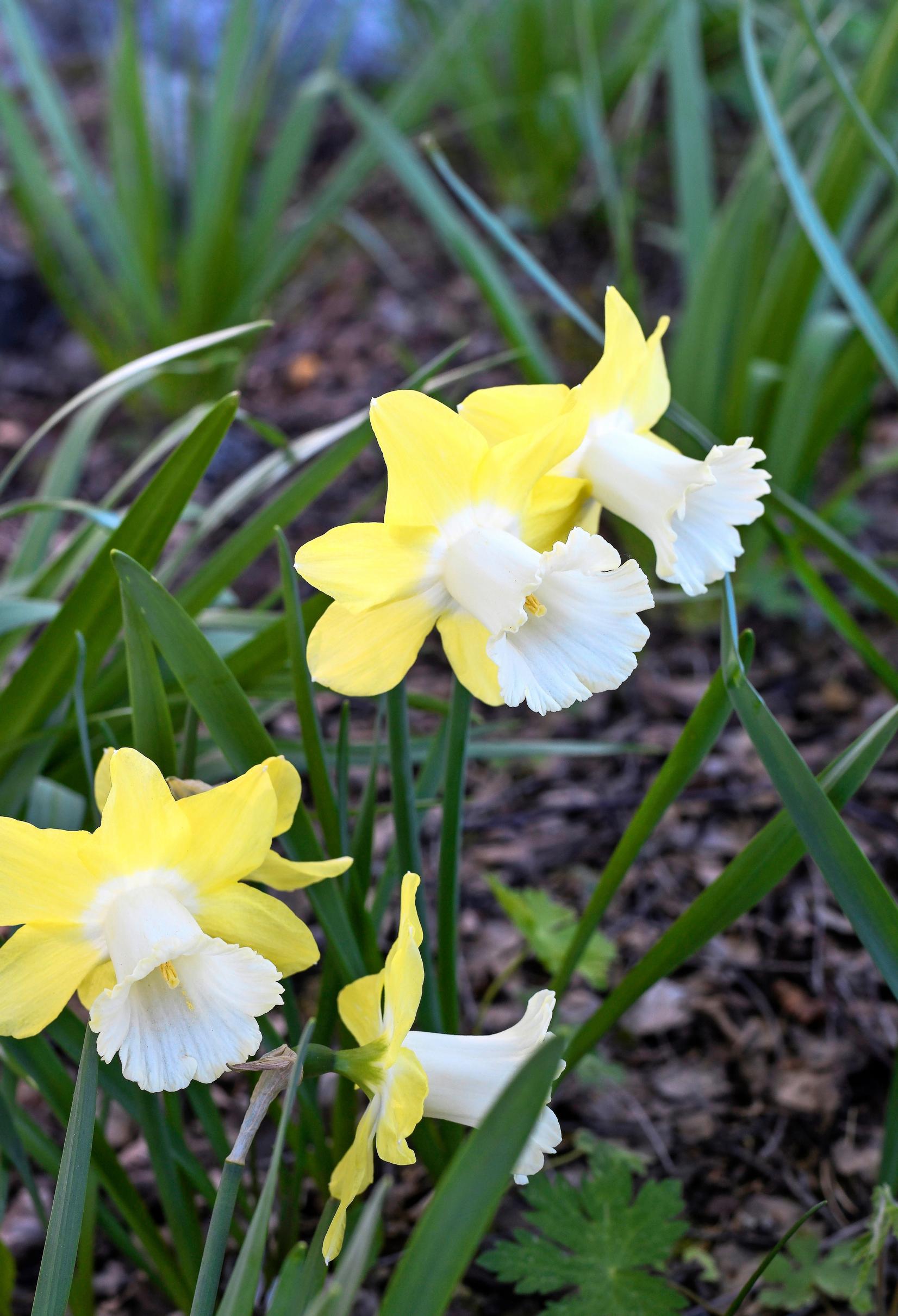
Take a look at our earlier story about Chatarina’s summer garden: The gardener’s sprawling garden is lush, relaxed, and stylish: “There’s always room here for new ideas”
